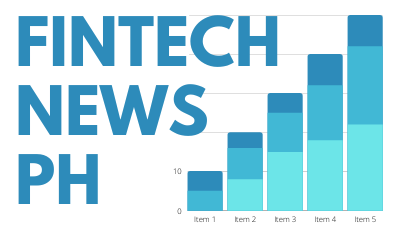A team of experts from the International Monetary Fund (IMF) led by Mr. S. Jayanath Peiris recently conducted a series of discussions on the Philippine economy as part of its 2023 Article IV Mission, an annual bilateral consultation with member countries where an IMF Mission Team meets with government and central bank officials to discuss and assess economic and financial developments.
The discussions were held for about two weeks, or between September 21 to October 3, 2023.

IMAGE CREDIT: https://www.officialgazette.gov.ph/
At the end of the mission, Mr. Peiris issued the following statements: “The Philippines economy has emerged from the pandemic strongly but has since confronted a confluence of global shocks. Growth moderated from 7.6 percent in 2022 to 4.3 percent in the second quarter of 2023, largely due to a weak global economy and tightened policy settings. Having bottomed out at the end of the second quarter, growth is projected to bounce back by year-end to 5.3 percent in 2023 and reach 6.0 percent in 2024, supported by an acceleration in public spending and improved external demand for Philippine exports.”
He also stated that the main downside risks to the outlook include persistently high global and domestic inflation that could necessitate a further tightening of monetary policy, an abrupt global slowdown that puts downward pressure on goods and services exports, an intensification in geo-political tensions, and depreciation pressures stemming from capital outflows under volatile market conditions.
On the other hand, a more resilient US economy and a rebound in domestic demand supported by an easing of financial conditions provide upside risks.
“Decisive monetary tightening and moderate minimum wage hikes helped mitigate inflationary pressures, with headline inflation now expected to return to the BSP’s target band by the first quarter of 2024. However, core inflation remains elevated and inflation risks are tilted to the upside, including higher commodity prices that could lead to second-round effects. Thus, a higher-for-longer policy rate path is warranted until inflation firmly falls within the target range alongside a tightening bias to anchor inflation expectations. The current account deficit is expected to narrow to 3.0 percent of GDP in 2023 and 2.6 percent in 2024 from 4.5 percent in 2022, supported by lower commodity prices, a pick-up of electronic exports, and an acceleration in service exports,” the IMF Mission Team’s statement further read.
“Fiscal consolidation as envisaged under the Medium-Term Fiscal Framework is on track, reflecting a strong revenue performance and lower current spending, while maintaining infrastructure outlays at or above 5 percent of GDP,” it added.
Bringing PH’s debt-to-GDP ratio to less than 60% over the medium-term
In the IMF Mission report, it was also stated that the pace of consolidation should be appropriate so as to bring the national government debt-to-GDP ratio to less than 60 percent over the medium term. An even more ambitious revenue mobilization strategy, it said, could also finance more social spending to achieve poverty reduction goals and respond to natural disasters while keeping the deficit path unchanged.
Fiscal reforms, including the Military and Uniformed Personnel Pension Bill and the Budget Modernization Bill, are also critical and should be complemented by ongoing efforts to strengthen the oversight of government-owned and controlled corporations (GOCCs).
The renewed emphasis on financing the country’s infrastructure gaps through Public Private Partnerships (PPPs) is well-placed and the new PPP Code is welcome in this regard. The reform of the mining fiscal regime and Mining Act provides an opportunity to enact a progressive and unified tax system and a competitive investment regime.
“The banking sector is well-capitalized and liquid, but pockets of vulnerability remain in the corporate sector. The higher interest rate environment underscores the importance of strengthening systemic risk monitoring and financial supervision, expanding the macroprudential toolkit, as well as calibrating it to counter vulnerabilities stemming from sectoral exposures and linkages between financial conglomerates and non-financial corporates,” noted Mr. Peiris and his team.
“Moreover, the global refocusing on bank resolution frameworks is an opportune time to strengthen the current regime. Efforts to be removed from the FATF grey list should be stepped up and would benefit from the publication of a credible timeline to address outstanding Anti-Money Laundering/Combating the Financing of Terrorism (AML/CFT) issues,” the team explained in their report.
Maximizing potential benefits from recent RCEP ratification and opening up to foreign investment would require reforms to address supply-side issues in the agriculture sector (including by reducing tariffs on essential items at an opportune time), removing non-tariff barriers linked to administrative procedures and regulation, restarting responsible mining to meet increasing demand for green minerals, and further efforts to improve the ease of doing business.
Closing infrastructure gaps
The Maharlika Investment Corporation (MIC) could contribute to the push for closing infrastructure gaps and green investments by following best practices in strategic investment management and accountability frameworks.
Structural reforms should remain focused on reducing poverty levels and addressing inequality by creating quality jobs and expanding social protection programs, including the recently piloted Food STAMP Program to complement the 4Ps.
The Philippine economy is highly vulnerable to extreme weather-related events, underscoring the need to address the impacts of climate change through a multi-pronged approach including public investment in resilient infrastructure and the introduction of carbon pricing mechanisms.
Sustaining the significant growth gains of the past two decades and reaping the benefits of the demographic dividend will depend on further investments to diversify exports, promote the acquisition of new skills, and enhance connectivity across the archipelago to harness the digital economy.
“The IMF team would like to thank officials in the government, the central bank, other public agencies, the speaker and members of the House of Representatives, and representatives of the private sector and civil society, for their constructive and open engagement,” ends Mr. Peiris.

